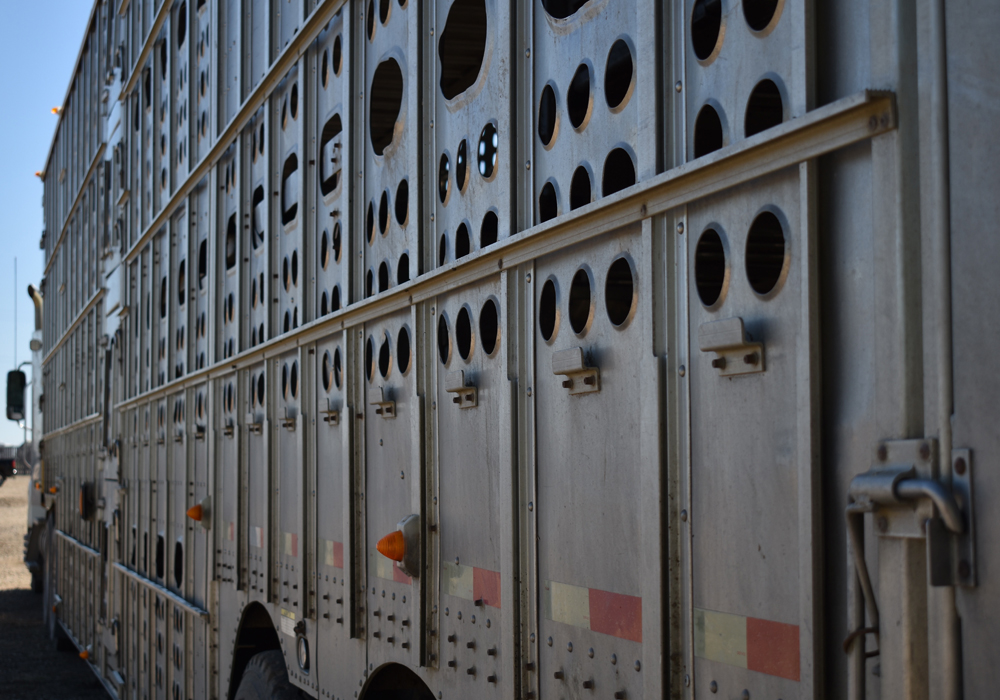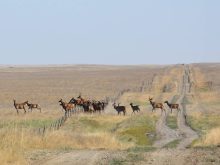Canada’s cattle and dairy sectors will have two years to familiarize themselves with the federal livestock transportation regulations that come into effect Feb. 20.
Federal Agriculture Minister Marie-Claude Bibeau told cattle producers Dec. 11 that they’ll have a transition period before the Canadian Food Inspection Agency institutes hard enforcement that would include fines and penalties for non-compliance.
The transition period specifically involves the feed, water and rest provisions in the regulations that require shorter transport times and a requirement to unload cattle and give them eight hours of rest if the length of the journey exceeds 36 hours.
Read Also

Crop quality looks good this year across Prairies
Crop quality looks real good this year, with the exception of durum.
Current rules allow cattle to be in transit for up to 48 hours with no requirement to provide feed, water or rest. However, statistics show most loads reach their destination well before that.
“During the first two years, the CFIA will focus its enforcement efforts on compliance promotion through education and awareness measures, which are part of the CFIA’s continuum of enforcement actions,” the CFIA said in response to queries.
“The amended regulations contain outcome-based requirements to ensure that animals are not likely to suffer (from exhaustion, dehydration, weather or other conditions), be injured or die. The CFIA has the discretion to appropriately enforce these outcome-based requirements to prevent and act on animal welfare situations.”
The agency has established one working group for the beef sector and another for the dairy and veal sector to provide guidance, identify issues and find solutions.
News of the softer launch of new rules was welcomed by the Canadian Cattlemen’s Association, which has asked for a delay in regulatory implementation until current research into transport and rest times is completed.
“I think it’s an encouraging step, and obviously the devil is in the details of how this transition period will operate, but certainly having some more time to collect more data through research and have more time for awareness and education for the entire industry … is something that we’ve been asking for since the regulations were published in Canada Gazette Part II last February,” said CCA policy and program manager Brady Stadnicki.
The cattle sectors have expressed concern about the availability and capacity of off-loading facilities. They contend that loading and unloading cattle in transit causes stress and increases risk of injury, while the benefits of an eight-hour rest period for cattle have not been established. Research is underway to explore the latter aspect, some of it funded by Agriculture Canada.
As well, cattle producers are concerned about health risks associated with commingling cattle in temporary facilities while the rules-imposed rest is provided.
Stadnicki said the CCA also seeks confirmation that there will be some flexibility in the regulations when they are fully enforced.
“I think one of the big things that we’ve really wanted to stress was ensuring that there is the flexibility for producers and livestock haulers when unforeseen and uncontrollable circumstances occur on the road,” he said.
Bad weather, road and bridge closures, construction and mechanical failure can all prevent cattle loads from reaching their destinations within the required time.
“That’s the reality of travel in Canada and especially in some of the east-west travel when you go from Manitoba to Ontario or Quebec or even the Maritimes into Ontario or Quebec,” said Stadnicki.
“We’ve been working with CFIA on trying to make that more clear in the interpretive guidance.”
Oliver Anderson, director of communications in the federal agriculture minister’s office, confirmed the transition period does not represent a delay or an exemption for the beef and dairy sectors. However, he said the department recognized the cattle industries face a range of challenges to comply with the new rules.
“Certainly there’s a recognition that the cattle sector has some unique challenges and so there’s a two-year transition period that we can focus on that education and awareness for what kinds of enforcement measures that they would take,” Anderson said.


















